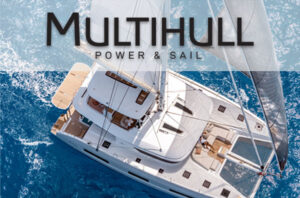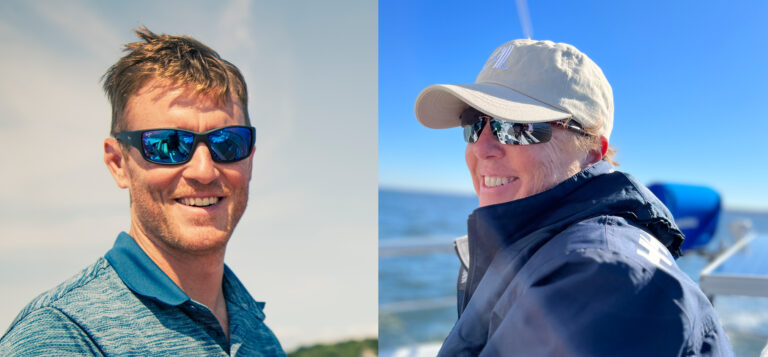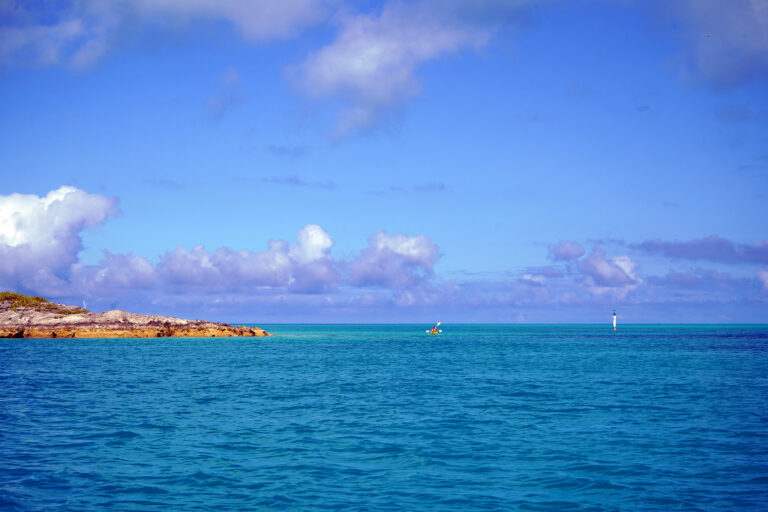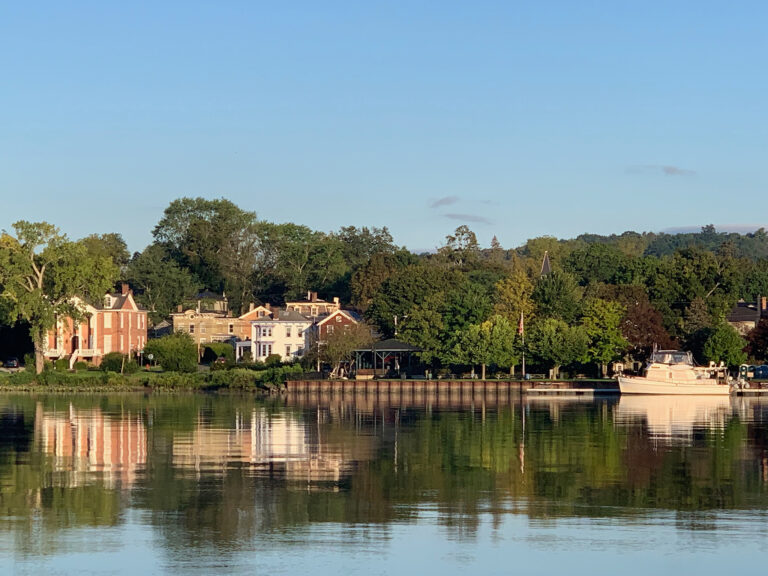
My wife, Carla, and I had no intention of going to the Berry Islands. I had never even heard of them. We were at anchor in Nassau, though, when the pandemic finally reached The Bahamas. Immediately, everything started to close down. We needed a new plan, and we needed it fast.
We were due to leave New Providence for Miami, by way of Bimini and the Gulf Stream, but with the lack of a visa for Carla due to the U.S. embassy closing, our dream of sailing the Florida Keys was over. It was still too early in the season to head out into the North Atlantic and make our way back to Europe, even if the islands of Bermuda and the Azores would take us. We were going to have to sit this one out.

Ultimately, we had decided to cruise the Berry Islands after which it would be on to the Abacos before departing for Bermuda a couple of months later. That would give time for everywhere to close and then, hopefully, reopen. We stocked up with provisions for a month at Solomon’s Fresh Market and headed back to our Lagoon 400, Ocean Fox, to put our plan into action.
Most people have heard of George Town, of the Exumas, Hope Town in the Abacos and Bimini, but the Berry Islands are small and, with their lack of infrastructure for tourists, often overlooked. Altogether, they cover a mere 30 square miles, split across 30 islands and a hundred islets and cays. They are also home to around 800 people.
Sitting northwest of Nassau, they are not on the rhumb line to Marsh Harbour or the track west across the Great Bahama Bank and Alice Town. For the most part the islands are deserted. My 450-page pilot book for The Bahamas devotes only about 11 pages to them.
The 26-mile passage over was a blast, with the wind just aft of abeam. We sailed with a reef in the main and another reef in the genoa after setting off just after first light in order to give us time to find an anchorage for the night in the bite of Bird Cay, a private island on the southern tip of the archipelago. Four hours and 10 minutes after our departure, we were pouring 8ft of chain over the bow roller into the clear gin-tinged blue waters and onto the Egyptian cotton-colored sands below. This was paradise.

A few days later we were on the move again to Whale Cay, in search of some soft sand and sheltered waters to dry the boat out—it was time to give the bottom a good cleaning. Upon our arrival we set out in the Highfield dinghy with a lead line to find the best route to the beach. By the afternoon, Ocean Fox was just knee deep in the warm clear waters, and we were out with our scrubbing brushes giving the two hulls a good wipe-off to get rid of the green algae that had been slowing us down. Our only visitors were a few small sharks that came along to see what all the fuss was about.

With the boat still sitting on its keels we went for a walk ashore to explore the beaches around the cut. The waters were warm, and with the trade winds blowing at 30 knots, the atmosphere was fresh and invigorating. The remoteness of these islands is breathtaking, with white beaches, lapis blue waters and wide-open skies.
The following day we were cruising around the outside of Whale Cay to the north point of the island and the anchorage tucked in between Whale and Little Whale Cays. The 15-mile passage consisted of a reach followed by a broad reach as we passed the elbow of the island and headed a little more to the north. We came through the cut keeping closer to the north of the two islands and found a spot off the small quay that added some protection to the beach beyond. To venture in farther behind the islands would have been too much of a risk without the help of some local knowledge or a guide.
A few days later and we were gutter running along the sheltered side of Hoffman’s Cay. With Carla on the bow, we traveled as slowly as we could, hoping not to hit either coral or a rock. At one point, we found ourselves on the soft sand bottom and had to detour back a few miles to find another way through. Eventually, though, we managed to get to the large bay on the west side of the island that was our destination and were soon in the RIB and on our way to the beach.
We had come here to see the Blue Hole, a huge freshwater lake, like the eye of a needle in the long slender island. It was a short walk through the bush and up the rocky escarpment to the vantage point above. The water below looked dark and sinister, and we both declined the offer of a swim. The view, though, was something else.
People often refer to the Berry Islands as the “The Fish Bowl of the Bahamas.” Located on the southeast edge of the Great Bahamas Bank, they are next to the so-called “Tongue of the Ocean,” a deep underwater trench that draws in large fish, rays and turtles, making these waters some of the most beautiful and productive of the entire Bahamas.

The runs between the islands therefore made for a great opportunity to get the rods out, and it was never long before we would have something on the line. Half an hour of fighting, and we would land a large amberjack or tuna, giving us enough protein for a week or two. It really was quite extraordinary that they would just come along one after the other. All were filleted, bagged and frozen for later consumption.
Our final destination was the bay on Great Harbour Cay, an anchorage protected from the ocean by a number of small off-lying islands. Passing through the entrance, you head straight in and make a turn to port around the shallows and into the protection of the so-called mainland. Here we dropped the anchor in 6ft of water, knowing all too well that at half tide we would be on the bottom. There were two other boats in the anchorage, and from time to time others would come and go, though it would probably hold an armada of yachts if it was any farther south in the Exhumas.
There are no large hotels here, only a few private summer houses and the occasional abode for the adventurous or the travel influencer looking for a paradise picture that somehow nobody else has taken. That leaves only cruisers like us to enjoy the peace, the vistas and the waters the area has to offer. We had found our paradise. While we were there we would step off the back of the boat and walk to the shore through the shallows or take the Highfield across the deeper passages and on into the inlet. Large spotted rays would shoot through the water as we chased them with the GoPro beneath the surface. Further into the inlet and the waters would be frequented by the turtles. The warm water serves a nursery for the young, which spend their days darting between the shallows.
In all we spent a week sitting in this bay, enjoying these clear blue waters, walking the shallow sandbanks and combing the beaches. Every turn was another tantalizing view. The camera snapped at every opportunity.

Days would go by as we enjoyed the spectacle of the small islands that protect the bay from the harsh waters of the Atlantic ocean to the east. This was a stunning location to spend your time in lock-down. We had everything onboard to stay here for a while.
Months earlier, our journey through The Bahamas had started in Great Inagua, the most southerly island in the archipelago. From there we had continued on through the Exumas, then out east to Spanish Wells in Eleuthera. We had never seen The Bahamas at their best, though, until we discovered The Berries. On September 1 the previous year, the islands had been stripped of all vegetation and destroyed by Hurricane Dorian. But somehow the magic of the Berries was saved. If I ever get the opportunity to sail this way again the Berries will be my favored destination. The fact that it is so underdeveloped, pristine and natural is central to its rugged beauty.
Ed Note: You can follow Carla and Simon’s journey through the “Sailing Ocean Fox” or “Healthy on Board” Facebook, Instagram, YouTube and Patreon pages. Their website is sailingoceanfox.com. Their podcast can be found at destinationsailingchannel.buzzsprout.com
Photos by Simon Fowler
MHS Winter 2022








